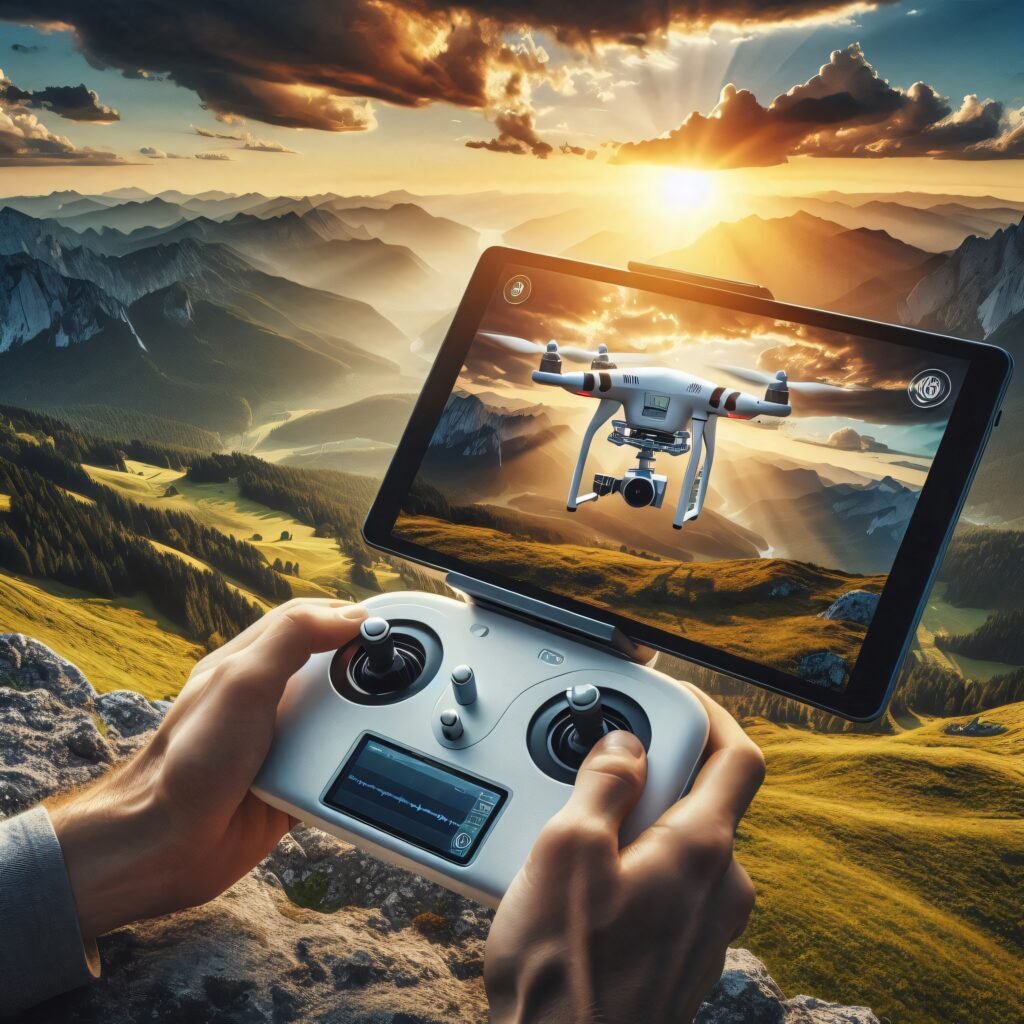Introduction to Design Technologies in the Drone Industry
Design Technologies in Drones: Revolutionizing the Sky, drones have exploded over the past ten years and find uses in sectors like photography, agriculture, and logistics. The development of design technologies is at the core of this revolution as it has turned these flying vehicles into sophisticated tools able of complicated chores. This paper investigates how modern design technologies are influencing the drone sector by means of insights on their effects on performance, usability, and market competitiveness.
The Evolution of Drones and the Role of Design Technologies
Historical Perspective
While consumer drones didn’t truly take off until the late 2000s, the concept of unmanned aerial vehicles (UAVs) started in the early 20th century. Materials, miniaturization, and electronics all helped to spur this expansion. Making drones more efficient and affordable has mostly depend on the use of lightweight, robust materials like carbon fiber and sophisticated aerodynamics.
Modern Innovations
Modern drones are marvels of design technology, combining computer vision, artificial intelligence, and machine learning to improve capability. From negotiating difficult terrain to gathering high-quality aerial imagery, these technologies let drones complete sophisticated tasks independently.
Cutting-Edge Design Technologies in Drone Manufacturing
Advanced Aerodynamics and Materials
Range and stability of drone flying depend on aerodynamic efficiency. Using computational fluid dynamics to maximize drone forms for lowest drag and highest lift, companies like DJI lead the race. Furthermore improving performance and battery life is the usage of light materials like carbon fiber.
AI and Machine Learning
Redefining drone capabilities, artificial intelligence (AI) has allowed autonomous decision-making and real-time data processing. To show the value of smart design, Skydio’s drones, for example, use artificial intelligence algorithms to precisely track objectives and avoid objects.
Computer Vision and Sensor Integration
Drone “seeing” and interpretation of their environment is made possible by computer vision technologies Drones can map surroundings in 3D by combining cameras and LiDAR sensors, therefore supplying vital information for uses in construction, agriculture, and other sectors.
The Impact of Design Technologies on Drone Performance and Usability
Enhanced Flight Capabilities
Flying performance is substantially improved by design advances. Among drone users, the DJI Mavic Air 2 is a popular as it combines sophisticated aerodynamics and computer vision to attain amazing flying stability and obstacle avoidance.
Improved Battery Life and Efficiency
Longer flying periods are a result of light-weight materials and clever design. For photographers and videographers looking for long flying sessions, the Parrot Anafi’s use of a carbon frame lowers weight, boosts battery efficiency, and increases flight endurance.
User-Friendly Interfaces
Thanks to developments in software architecture, modern drones have simple interfaces. Remote controllers and user-friendly software let novices operate drones, while providing sophisticated tools for more experienced users.
FAQ Section Design Technologies in Drones: Revolutionizing the Sky
How do Design Technologies in Drones Revolutionizing the Sky performance?
From flying stability to maneuverability to endurance, design advancements improve several facets of drone performance. Aerodynamic designs lower air resistance; artificial intelligence-powered technologies enhance navigation and obstacle avoidance.
What role does AI play in drone design?
By learning from their surroundings, artificial intelligence technology lets drones make real-time judgments for jobs such target monitoring and path planning. This increases autonomy and lessens the need for hand-activated assistance.
What materials are used in modern drone manufacturing?
Modern drones use lightweight metal like aluminum, composites like carbon fiber, and robust plastics among other components. These materials maximize general performance by balancing weight, cost, and strength with regard to
How is computer vision used in drones?
Computer vision allows drones to process visual information, aiding in tasks like mapping, object detection, and navigation. By analyzing camera feeds, drones can interpret their surroundings and make informed decisions.
What is the future of drone design technologies?
Drone design technology’s future resides in further integration of sophisticated materials, artificial intelligence, and machine learning. Drones with expanded capabilities, longer flying periods, and better environmental adaptation should not be far off.
What Are the Latest Design Technologies in Drones?
What modern technologies find use in drone design today? This looks at developments improving drone capability, efficiency, and performance. Recent developments in drone design include artificial intelligence integration, which enables smart sensors enhancing navigation and obstacle detection, lightweight materials improving agility and flying endurance, and improved flight control enabled by AI integration.
How Do Design Technologies Impact Drone Functionality?
How may these new design innovations change drone operation? This looks at how developments enhance flying and navigation operational elements. Modern design innovations let drones operate more effectively and securely in many settings by improving flying stability, extending battery life, boosting cargo capacity, and strengthening navigation systems.
Which Design Technologies Enhance Drone Durability?
What design elements help drones to be more robust and able to survive in demanding environments? This mostly addresses weather resistance and material strength. Key to increasing drone endurance and enabling their consistent operation in demanding conditions are technologies such carbon fiber and aluminum as well as waterproof and shock-absorbing designs.
How Are Autonomous Drones Shaped by Modern Design Technologies?
In what ways may fresh technology affect drone autonomy? This looks at how artificial intelligence may enable drones to be more autonomous. The answer is that real-time data processing and decision-making made possible by artificial intelligence and machine learning technology makes autonomous drones smarter and enables them to negotiate challenging surroundings free from human involvement.
What Role Do Lightweight Materials Play in Drone Design?
In what ways may low weight materials improve drone performance? This looks at how drone efficiency varies with material choice. The answer is that enhancing flying efficiency and agility need lightweight materials. These materials let drones fly farther, carry bigger cargo, and move more readily in the air by lowering their general weight.
How Is Aerodynamics Integrated Into Drone Design?
How do drone designs reflect aerodynamic ideas? This looks at how drone bodies are meant to lower drag and boost performance. Aerodynamic designs, including streamlined bodies and propellers, can lower air resistance, enhance flying performance, and boost energy economy, so enabling drones more capable of managing many speeds and situations.
What Are the Environmental Considerations in Drone Design Technologies?
How may environmental issues affect drone design? This addresses the implementation of environmentally friendly materials and energy-efficient technologies. To lessen the environmental effect of drones, drone makers are concentrating on utilizing environmentally friendly materials and using energy-efficient technology like solar power, therefore fostering sustainable industrial innovation.
What Are the Most Prominent Trends in Drone Design Technologies?
What are the most often used patterns in drone design nowadays? This addresses present advancements as well as upcoming field developments. Some of the notable developments include modular and foldable drone designs for simple transportation and drones developed for urban air mobility, therefore indicating a change toward drones becoming a necessary component of next transportation systems.
How Do Design Technologies Affect Drone Cost and Market Accessibility?
How may new drone designs affect customer accessibility and cost? This looks at how design advancements affect price-ability. The answer is creative design innovations assist reduce manufacturing costs, which in turn makes drones more accessible and reasonably priced for a larger market encompassing both enthusiasts and professionals.
What Challenges Are Faced in Developing New Drone Design Technologies?
What challenges arise in the evolution of fresh drone concepts? This solves the challenges in the progress of drone technology. To keep developing in the sector, the key obstacles in drone design—technical constraints, the great expense of sophisticated materials, and traversing complicated legal frameworks—must all be resolved.
6. Competitor Analysis
DJI
Technological Innovations
Leader Design Technologies in Drones Revolutionizing the Sky, DJI is quite good at incorporating cutting-edge design technology. Modern aerodynamics, computer vision, and artificial intelligence for best performance define its drones. The DJI Mavic Air 2, for instance, shows how creative design may improve flying stability and obstacle avoidance.
Market Positioning
The dedication of DJI to creativity has helped them to become a market leader. Its large investments in research and development guarantee ongoing improvements in design technology, therefore staying ahead of rivals.
Parrot
Technological Innovations
To improve drone performance, Parrot emphasizes on light-weight materials and clever design. Both professional and leisure users will find Parrot Anafi’s carbon frame technology to boost flying endurance and energy efficiency.
Market Positioning
Parrot appeals to a wide audience by using design technologies to provide drones that strike a mix between cost and performance. Its emphasis on simplicity of use and portability distinguishes it from rivals.
Skydio
Technological Innovations
Driven by artificial intelligence and machine learning, Skydio’s power resides in autonomous flying capacity. The creative design of the Skydio 2 allows it to precisely negotiate challenging surroundings, hence redefining autonomous drones.
Market Positioning
Skydio targets users looking for sophisticated obstacle avoidance and autonomy. Emphasizing user-friendly design and flawless integration of design technology draws experts and tech-savvy people.
The Future of Design Technologies in Drones Revolutionizing the Sky
With several developments ready to change the sector, drone design technology has bright future prospects:
- Increased Automation: With improved autonomous capabilities, drones will keep changing and help to lower the demand for human involvement in difficult jobs.
- Improved Energy Efficiency: Improvements in lightweight materials and battery technologies will prolong flying periods and lower environmental effect.
- Expanded Applications: From agriculture to emergency response, design advances will let drones meet fresh difficulties in many different sectors.
- Seamless Integration: Future drones will easily interact with IoT and other developing technologies to allow real-time data exchange and decision-making.
8. Conclusion and the Importance of Innovation in the Drone Industry
Driven by performance, usability, and market competitiveness, Design Technologies in Drones Revolutionizing the Sky constitute the backbone of drone invention. Integration of artificial intelligence, machine learning, and sophisticated materials will be crucial in determining the direction of drones as the market develops. Whether your interests are in design technologies, technology inventor, drone enthusiast, or aerospace engineer, keeping current with Design Technologies in Drones Revolutionizing the Sky is crucial to fully use these amazing machines.


